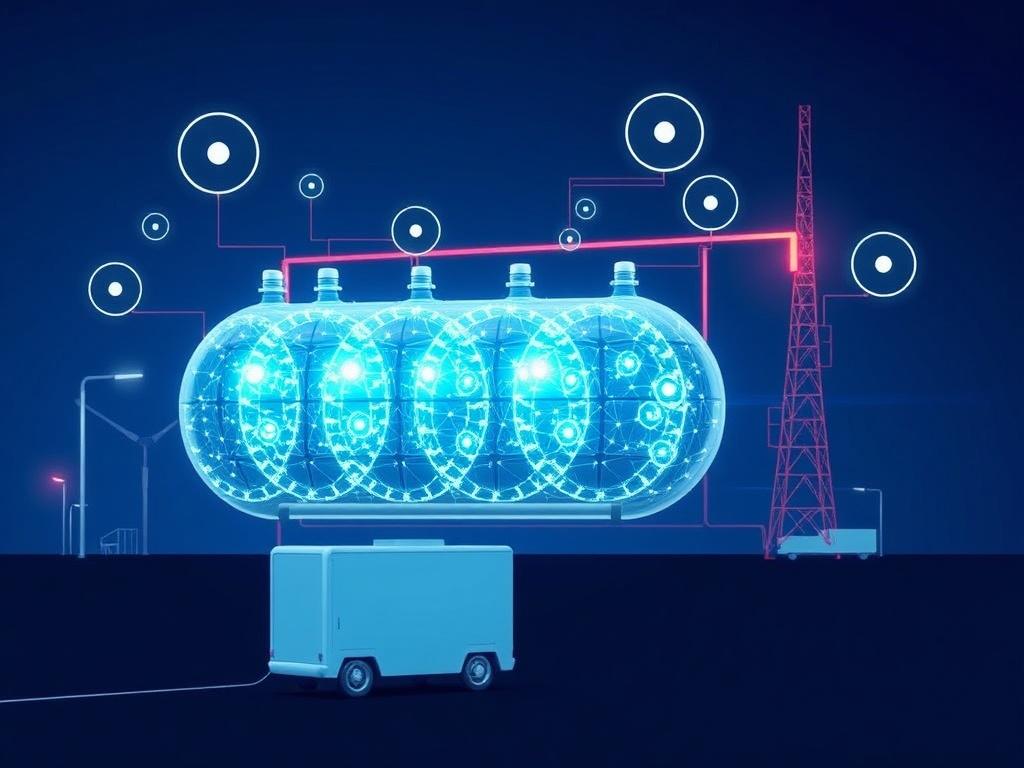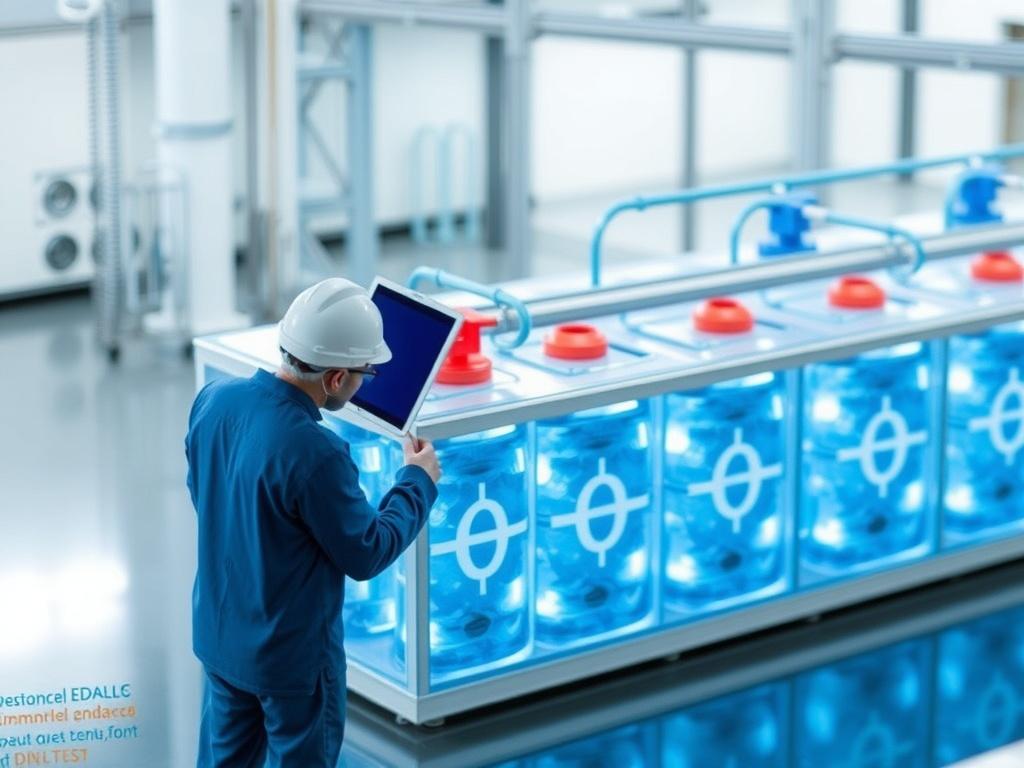- The Importance of Storage and Transport in the Hydrogen Economy
- Understanding Hydrogen’s Unique Physical and Chemical Properties
- Key Physical Properties of Hydrogen Relevant to Storage and Transport
- Challenges in Hydrogen Storage
- 1. Low Energy Density in Normal Conditions
- 2. Material Challenges and Safety Concerns
- 3. Different Storage Methods: Pros and Cons
- Table: Overview of Hydrogen Storage Methods
- Challenges in Hydrogen Transport
- 1. Pipeline Infrastructure and Material Compatibility
- 2. Transport by Road and Sea
- 3. Leakage, Safety, and Regulatory Challenges
- Emerging Innovations and Future Directions
- Summary of Key Challenges and Innovations
- Global Perspectives and Policy Implications
- Conclusion
Hydrogen has emerged as a promising clean energy carrier that could revolutionize the way we power our world. Its potential to decarbonize sectors such as transportation, industry, and electricity generation is considerable. However, despite the excitement around hydrogen, there are significant challenges in hydrogen storage and transport that must be addressed before this fuel can become mainstream. Understanding these obstacles is vital for researchers, policymakers, and industry leaders aiming to build a sustainable hydrogen economy. In this article, we will explore the key technical and practical difficulties associated with hydrogen storage and transport in detail, presenting a clear picture of where we stand and what needs to be done.
The Importance of Storage and Transport in the Hydrogen Economy

Before diving into the specific challenges, it’s helpful to understand why hydrogen storage and transport are such critical components of any hydrogen strategy. Hydrogen is the lightest element on the periodic table, and unlike liquid fuels, it does not exist naturally as a dense energy source. This means that storing and moving hydrogen efficiently and safely is inherently difficult. The manner in which hydrogen is stored affects its energy density, safety, cost, and ease of use. Similarly, the way we transport hydrogen—whether in pipelines, tanks, or other mediums—impacts the feasibility of building a large-scale supply chain.
For hydrogen to gain widespread adoption, we need reliable storage systems that can hold significant amounts of hydrogen in a compact form and transportation methods that minimize losses and maintain safety. The challenges in hydrogen storage and transport therefore not only concern technology but also infrastructure, economics, and regulatory frameworks.
Understanding Hydrogen’s Unique Physical and Chemical Properties

Hydrogen’s unique properties are at the heart of many of the challenges we face. It has the highest energy content per unit mass of any fuel, about three times more than gasoline, but its energy content per unit volume is very low at ambient conditions. This means hydrogen occupies a lot of space unless compressed or liquefied, which requires energy and specialized equipment.
Another consideration is hydrogen’s small molecular size. This small size allows hydrogen to leak easily through many materials, which complicates storage and transport solutions, posing risks of loss and potential safety hazards. Moreover, hydrogen can cause embrittlement in metals, weakening pipelines and storage tanks over time. These aspects contribute heavily to the technical hurdles in creating infrastructure that is both durable and safe.
Key Physical Properties of Hydrogen Relevant to Storage and Transport
| Property | Value | Impact |
|---|---|---|
| Molecular Weight | 2.016 g/mol | Extremely light, leading to challenges in containment |
| Boiling Point | -252.87°C | Needs cryogenic temperatures for liquefaction |
| Energy Density (by Mass) | 120 MJ/kg | High energy content |
| Energy Density (by Volume, at STP) | 0.01079 MJ/L | Very low; requires compression or liquefaction |
| Permeation Rate | High | Leads to leakage and safety concerns |
Challenges in Hydrogen Storage
1. Low Energy Density in Normal Conditions
At ambient temperature and pressure, hydrogen exists as a gas with a very low volumetric energy density, making it impractical for many applications unless compressed or liquefied. This low density means that to store hydrogen effectively, it either needs to be compressed to very high pressures (up to 700 bar in some cases) or cooled to cryogenic temperatures to create liquid hydrogen.
Both options have their drawbacks. Compression consumes energy and requires robust, heavy tanks capable of withstanding the pressure, which increases cost and complexity. Liquefaction is even more energy-intensive, requiring temperatures below -253°C and highly insulated tanks, which results in boil-off losses over time. Both limit the scalability and economic feasibility of hydrogen storage.
2. Material Challenges and Safety Concerns
Hydrogen molecules are small enough to diffuse through many conventional materials. This leads to leakage, which is dangerous due to hydrogen’s flammability and the difficulty in detecting leaks—it is colorless and odorless. Material embrittlement is another severe issue, especially in metals commonly used in storage tanks and pipelines. Hydrogen atoms can invade the metal lattice and cause it to become brittle, increasing the risk of cracks and failure.
Researchers are continuously investigating new alloys and composites that can resist embrittlement and reduce leakage, but these materials often come with higher costs or other trade-offs.
3. Different Storage Methods: Pros and Cons
When it comes to hydrogen storage, several methods exist, each with associated challenges. Understanding these will help frame the technical hurdles clearly.
- Compressed Gas Storage: Hydrogen is compressed to very high pressures (350–700 bar) and stored in high-pressure tanks. This method is relatively simple but requires heavy, expensive tanks, and there is always the risk of leakage and rupture.
- Liquefied Hydrogen Storage: Storing hydrogen as a cryogenic liquid boosts energy density but requires heavy insulation and complex refrigeration systems. Boil-off losses during storage and transport can be significant.
- Metal Hydrides: Some metals and alloys can absorb hydrogen at a molecular level and release it upon heating. This method is promising for safe, compact storage but is often heavy, expensive, and slow to release hydrogen.
- Chemical Storage: Hydrogen is stored in chemical compounds such as ammonia or liquid organic hydrogen carriers (LOHCs) and released via chemical processes. While this allows for easier transport, the energy required to extract hydrogen and regenerate carriers is a challenge.
Table: Overview of Hydrogen Storage Methods
| Storage Method | Energy Density (MJ/L) | Advantages | Disadvantages |
|---|---|---|---|
| Compressed Gas (700 bar) | 5.6 | Relatively mature technology; quick refueling | Requires heavy, strong tanks; leakage risk |
| Liquid Hydrogen | 8.5 | Higher volumetric density than gas | Energy-intensive liquefaction; boil-off losses |
| Metal Hydrides | 1–2 (varies) | Safe storage; low pressure | Heavy; slow hydrogen release; costly materials |
| Chemical Carriers (Ammonia, LOHCs) | Varies; often higher than compressed gas | Easier transport; liquid at ambient conditions | Energy needed for hydrogen release; complex processing |
Challenges in Hydrogen Transport

1. Pipeline Infrastructure and Material Compatibility
Transporting hydrogen through pipelines is considered one of the most efficient methods, but existing natural gas pipelines are not always suitable for hydrogen. The embrittlement issue is a major concern affecting steel pipeline integrity, which can lead to failures and leaks. Furthermore, hydrogen’s low density means that volumetric flow rates are different from natural gas, affecting pipeline design criteria such as pressure and diameter.
In many regions, hydrogen pipelines are scarce, necessitating the construction of new networks, investments that require significant capital and regulatory support. Adding to this complexity, hydrogen must often be transported over long distances, for instance from production sites (like offshore wind-powered electrolyzers) to industrial centers, increasing logistical challenges.
2. Transport by Road and Sea
When pipelines are unavailable, on-road or maritime transport of hydrogen becomes necessary. This typically involves either compressed gas cylinders or liquid hydrogen tanks aboard trucks and ships. Both approaches come with safety considerations due to the flammable nature of hydrogen and the high pressures or low temperatures involved.
For longer distances, ammonia and other chemical carriers are gaining attention as hydrogen transport mediums due to their ease of handling and established transport infrastructure. However, the trade-off is that additional processing steps are needed to release pure hydrogen at the consumption point.
3. Leakage, Safety, and Regulatory Challenges
Hydrogen’s propensity to escape containment presents a continuous safety challenge during transport. Even small leaks can create flammable hydrogen-air mixtures, raising the risk of fires and explosions. While hydrogen flames are nearly invisible to the naked eye, modern detection technologies help mitigate this risk, but the safety culture and rigorous standards remain critical.
Regulatory frameworks for hydrogen transport are still evolving in many countries. Harmonizing safety protocols, technical standards, and cross-border agreements are necessary for the smooth development of hydrogen infrastructure at scale.
Emerging Innovations and Future Directions
Despite these challenges, advances in materials science, engineering, and chemistry are paving the way for better hydrogen storage and transport solutions. For example, research into new types of composites and polymers promises to reduce leakage and improve safety in storage tanks and pipelines. Novel storage materials like metal-organic frameworks (MOFs) and graphene-based structures hold potential for higher-density, safer hydrogen storage in the future.
On the transport front, digital monitoring technologies using sensors and AI help detect leaks and optimize pipeline operation in real-time, enhancing safety and efficiency. Development of dedicated hydrogen pipelines, improvements in ammonia cracking technologies, and more efficient liquefaction processes are also moving the industry forward.
Summary of Key Challenges and Innovations
| Challenge | Current Status | Innovations Tackling the Challenge |
|---|---|---|
| Low volumetric energy density | Limits storage volume | High-pressure tanks, liquid storage, advanced materials |
| Material embrittlement | Damage to storage and pipeline metals | New alloys, composites, coatings |
| Leakage and safety risks | Hydrogen’s small molecules easily escape | Advanced sealing, sensors, safety protocols |
| High energy cost of liquefaction and compression | Increases operational costs | More efficient compressors, novel liquefaction cycles |
| Limited pipeline infrastructure | New investments needed | Pipeline retrofits, novel transport carriers |
Global Perspectives and Policy Implications
The development of hydrogen storage and transport infrastructure will also depend heavily on government policies and international cooperation. Many countries have launched hydrogen strategies or roadmaps emphasizing clean hydrogen as a key future energy vector. Incentives, regulations, and investments will play a pivotal role in overcoming technical barriers and fostering a market for hydrogen-based technologies.
International collaboration can promote common safety standards, best practices, and infrastructure interoperability, which are essential given hydrogen’s potential role in global energy trade. Policies encouraging research and development, demonstration projects, and infrastructure build-out are vital to accelerating progress in this sector.
Conclusion
Hydrogen’s promise as a clean energy carrier comes with significant challenges in hydrogen storage and transport that must be tackled to unlock its full potential. Its unique physical properties require innovative solutions to safely and efficiently compress, liquefy, or chemically store hydrogen with minimal losses. Transporting hydrogen through suitable infrastructure introduces additional hurdles such as material embrittlement, leakage, and the need for new pipelines or carriers. However, ongoing advancements in materials science, engineering, and regulatory frameworks provide hope for overcoming these obstacles. Moving forward, coordinated efforts across industry, government, and academia will be essential to develop scalable, affordable, and safe hydrogen storage and transport technologies. Addressing these challenges head-on is the key to enabling a vibrant hydrogen economy that can support a sustainable, low-carbon energy future for the world.
Как вам статья?







